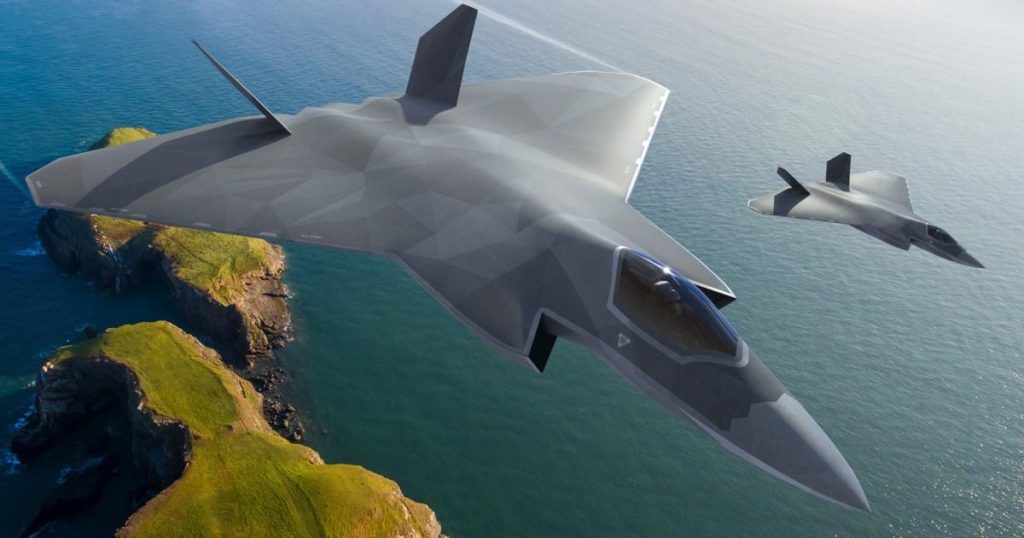The Royal Air Force (RAF) is poised to usher in a new era of air power with the Tempest, a next-generation fighter jet slated to replace the Typhoon by 2035. This ambitious project, known as the Global Combat Air Programme (GCAP), is a collaborative effort between the United Kingdom, Italy, and Japan, aiming to develop a cutting-edge aircraft capable of maintaining air superiority in the face of evolving threats. Images of the conceptual Tempest design have been released, showcasing a sleek and futuristic aircraft, promising a significant leap in capability compared to its predecessor. The development comes as the Typhoon, a joint venture with Italy, Germany, and Spain, is nearing the end of its operational life.
The Tempest program represents a crucial investment in the future of the RAF and the UK’s defense capabilities. With the Typhoon expected to be decommissioned in the next decade, the Tempest is designed to seamlessly fill the resulting capability gap, ensuring the UK maintains a robust and modern air force. The collaboration with Italy and Japan signifies a strategic partnership, pooling resources and expertise to create a world-leading combat aircraft. This international collaboration not only strengthens defense ties but also offers significant economic benefits, boosting domestic industries and creating high-skilled jobs.
While the program holds immense promise, concerns have been raised about potential cost overruns. The project carries a hefty £12 billion price tag, and the Commons Defence Committee has emphasized the need for stringent cost control measures. Previous multilateral defense projects, including the Typhoon, have been plagued by escalating costs and delays, and MPs are determined to avoid repeating those mistakes with the Tempest. The committee’s report acknowledges the importance of the GCAP but stresses the need for the Ministry of Defence (MoD) to maintain a firm grip on the program’s finances.
The Typhoon program itself faced significant challenges, including structural failings and unexpected delays, which contributed to increased costs. These experiences have served as valuable lessons for the Tempest program, with both the MoD and industry partners prioritizing adherence to the 2035 target date. Italy, having also experienced the setbacks of the Typhoon program, shares the UK’s commitment to delivering the Tempest on time and within budget. Japan, too, considers the 2035 deadline critical for its defense planning, underscoring the shared commitment of all partner nations.
The development of the Tempest is a collaborative endeavor involving several key players in the aerospace industry. BAE Systems, Rolls Royce, Leonardo, and MBDA are working alongside the MoD to bring the Tempest to fruition. This partnership leverages the expertise and innovation of leading defense companies, ensuring the aircraft incorporates cutting-edge technology and meets the demanding requirements of modern air combat. The MoD has affirmed its commitment to the 2035 target and emphasized the importance of the GCAP for the UK’s military capabilities, economic growth, and international partnerships.
The Tempest program represents a significant investment in the future of air power, promising to deliver a world-leading combat aircraft capable of meeting the challenges of a rapidly evolving security landscape. The collaboration between the UK, Italy, and Japan signifies a strong international partnership, pooling resources and expertise to create a cutting-edge fighter jet. While acknowledging the potential for cost overruns, the MoD and industry partners are committed to delivering the Tempest on time and within budget, learning from the lessons of past projects. The Tempest is poised to play a crucial role in maintaining the UK’s air superiority for decades to come.











